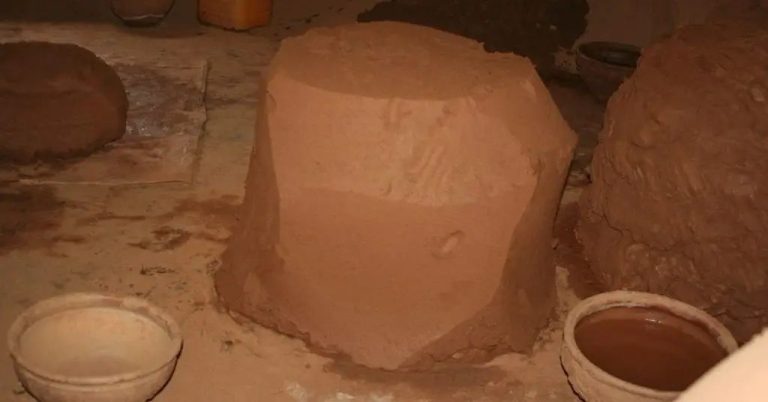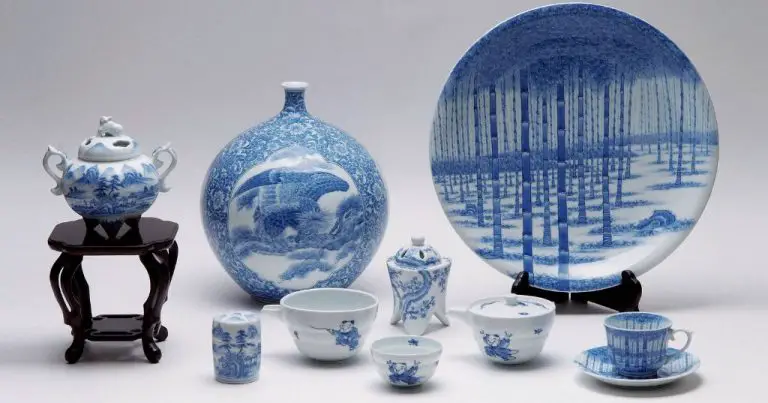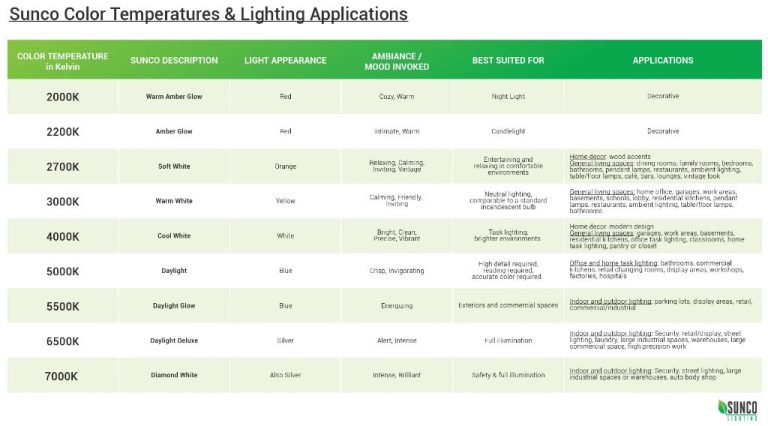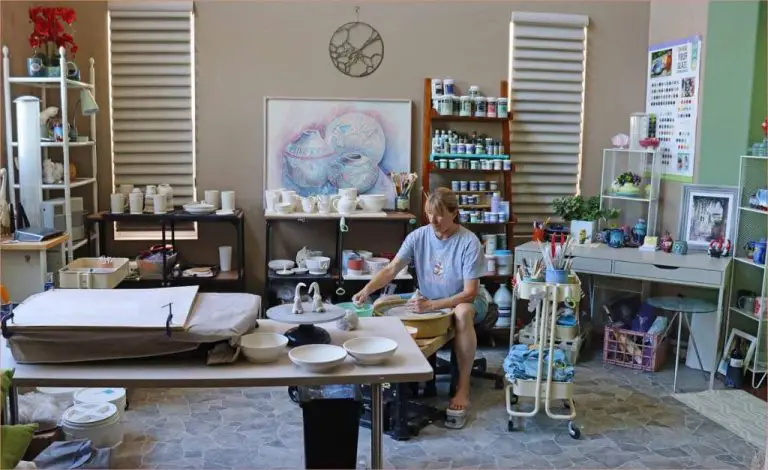Can Polymer Clay Be Used To Make Dishes?
Polymer clay is a type of modeling clay that is based on the polymer polyvinyl chloride (PVC). It typically contains additional polymers, as well as plasticizers, fillers, and color pigments. Polymer clay has a soft, pliable texture when raw, allowing it to be shaped and molded easily. However, when baked in a standard oven, polymer clay undergoes a chemical reaction that permanently hardens it into a durable plastic material.
Polymer clay has become an extremely popular sculpting and modeling material among artists, crafters, and hobbyists. This popularity stems from its versatility – it can be shaped, textured, colored, and combined in endless ways to create a variety of artistic objects and decorative items. Polymer clay is appreciated for being lightweight, easy to work with, and requiring no specialized tools or equipment beyond an ordinary kitchen oven for hardening. It produces professional, finished pieces while being more affordable and accessible than many other sculpting materials.
One creative use of polymer clay that has emerged is to form clay into dishes, bowls, platters, and other food-safe serving vessels. The unique properties of polymer clay make it well-suited for handcrafting durable and decorative dishes that can be both decorative and functional.
Safety Considerations
When it comes to polymer clay safety, the biggest concern is whether polymer clays are food-safe. Polymer clays like Sculpey are PVC-based and contain plasticizers to make them pliable. As a result, there is the potential for chemicals to leach from polymer clay into food and drink.
The FDA regulates items that come into contact with food. However, polymer clays are labeled as modeling compounds, not food-safe materials. Most major brands state their polymer clays should not be used with food.
While polymer clays made from PVC carry a higher risk of leaching, brands like Kato Polyclay are made from polyvinyl acetate. Studies show polyvinyl acetate-based polymer clays have less chemical migration, but leaching can still occur.
To reduce the chances of leaching, polymer clay dishes and serving items should be thoroughly cured according to package directions. Using a glaze or sealer provides an additional protective barrier. Avoid prolonged contact with acidic foods and beverages that can accelerate chemical leaching.
Advantages Over Other Clays
Polymer clay has a number of advantages over other types of clay, making it a versatile material for creating decorative dishes and serveware.
Compared to air-dry clay, polymer clay does not dry out when exposed to air. It maintains its flexibility and workability until cured in an oven. This allows artists to take their time sculpting details. The curing process also results in a durable, lightweight final product. Air-dry clay is prone to cracking and breakage.
In contrast to pottery clay, polymer clay does not require a pottery wheel or kiln to fire at high temperatures. It can be shaped by hand at room temperature then cured in a regular kitchen oven. This allows hobbyists to work with polymer clay at home without major equipment investments. The finished pieces do not absorb liquids like fired ceramics, making polymer clay suitable for dishes and plates.
Polymer clay comes in a rainbow of colors that can be blended and mixed. Pre-colored clay eliminates the need for painting or glazing after firing. Intricate patterns, textures, and layering effects can be achieved. The lightweight, pliable material is also easy to cut, shape, mold, and sculpt for creative decorations. Fine details hold their shape through curing and baking.
Best Practices
When working with polymer clay, following some best practices will help ensure your finished pieces turn out properly.
First, take care to condition your clay well before starting to shape it. Conditioning involves kneading the clay until it becomes soft and pliable. Polymer clay often needs 10-15 minutes of conditioning out of the package before it can be easily shaped without cracking.
Use your hands to knead the clay, pressing into it firmly and folding it over itself repeatedly. If conditioning a large amount, a plastic roller can help. Properly conditioned clay will be smooth, uniform in texture, and not prone to breakage when bent.
Next, utilize proper shaping and smoothing techniques for the type of item you want to make. For sculpting freehand clay figures, steel sculpting tools can prove useful. For smoothing surfaces, you can use a sheet of deli/wax paper placed over the clay as you refine the shape.
Baking the finished polymer clay piece is critical for curing and hardening the material. Follow the baking instructions on the clay package closely. Typical baking temperatures range from 110°C to 130°C for 15 minutes to 1 hour. Underbaking can result in weak, tacky clay that remains pliable. Overbaking may burn or scorch the clay.
Dishes and Serving Items
Polymer clay can be a great material for making a variety of dishes and serving items for the home. Here are some of the possibilities:
Plates, Bowls, Cups
Polymer clay plates, bowls, and cups can be made in any shape and size. The clay holds its shape well when baked according to package directions. Plain plates and bowls can be painted or glazed after baking for decorative effects. Cups with handles are easy to craft from a single piece of clay.
Utensils
Lightweight yet durable polymer clay utensils like forks, spoons, and knives can be sculpted. Blades can be made from clay or other materials like wood or metal can be inserted into the handles. The clay handles provide a nice, customizable way to decorate utensils.
Coasters, Napkin Holders
Polymer clay can be rolled flat, cut into shapes, and baked to create artistic coasters. Napkin holders and rings can also be crafted, adding handmade flair to any table setting. The solid clay pieces can be decorated or painted as desired.
Decorating and Finishing
Polymer clay dishes can be transformed into beautiful works of art through different decorating and finishing techniques. Here are some of the most popular ways to enhance polymer clay dishes:
Painting and Glazing
Acrylic paints work wonderfully on polymer clay and allow for creative designs. Multiple thin layers of paint create a smooth, professional look. Glazes can also be used to add color while providing a shiny finish. Glazes come in various metallic colors like gold, silver, copper and more.
Adding Texture
There are many ways to add interesting textures to polymer clay dishes. Pressing items into the clay, like lace or leaves, creates imprints. Using textured rollers gives an embossed look. You can also create patterns by carving into the clay with tools.
Sealing
Applying a sealant is an important final step for long-lasting polymer clay dishes. Water-based polyurethane provides a protective barrier against moisture and prevents fading. Multiple coats are recommended for durability, especially for serving dishes. This gives the dishes a finished look and allows them to be easily cleaned.
Long-Term Use Considerations
When creating polymer clay dishes and serving items, it’s important to consider how they will hold up over repeated long-term use. Three key factors are durability, ease of cleaning, and resistance to staining from foods.
Polymer clay becomes quite strong and durable after proper curing in the oven. Fully cured pieces are resistant to chipping and breakage with normal use. They can withstand repeated handwashing without wear and tear. However, polymer clay is not impervious. Dropping dishes on a hard surface may cause chips or cracks. It’s best to handwash them gently.
Most polymer clay pieces can be cleaned effectively with mild soap and warm water. A soft cloth or sponge should be used to gently scrub off any food residues. Avoid abrasive scouring pads or cleaners, as they may scratch the clay surface over time. For stubborn stains, a soft toothbrush can help remove debris from crevices in carved or textured areas.
Due to the porous nature of polymer clay, it can absorb stains from foods and beverages that have strong pigments. Curries, berries, tomatoes, and red wine can permanently discolor the clay if allowed to sit. It’s best to promptly handwash dishes after use to prevent staining. Coating cured pieces with a sealant can provide some protection, but stains may still occur over time.
With proper care and handling, polymer clay dishes can provide years of service. But be aware they require a bit more maintenance than traditional ceramic dinnerware.
Notable Artists
Polymer clay has been used to create stunning artwork by many talented artists over the years. Some prominent names in the polymer clay arts community include:
Helen Breil – Known for her colorful, intricate canework and mosaics. Helen finds inspiration in nature, architecture, and textiles. Her complex geometric patterns require meticulous planning and execution.
Angie Scarr – Creates life-like animal sculptures with stunning realism. She expertly captures fur textures and facial expressions in her wolf, fox, owl, and other creatures. Angie works very intuitively in developing her polymer clay sculptures.
Kim Korringa – Specializes in jewelry made with unusual color combinations and patterns. Kim rolls thin sheets of clay for her signature skinner blend canes. Her designs often incorporate glass, metal, and found objects.
Christi Friesen – Focuses on fantasy-inspired dragons and other mythological beasts. Christi’s background in special effects makeup gives her an edge in detailing creatures with skin textures, scales, horns, and claws.
Betsy Morgan – Known for her food-themed jewelry that looks good enough to eat. Realistic cakes, cookies, sandwiches, and more are sculpted in clay. Betsy challenges herself to recreate miniature versions of decadent desserts.
Beginner Tips
Polymer clay is a very approachable art medium for beginners. Here are some tips to get started:
Choosing Clay Brands and Colors
The most popular brand of polymer clay is Sculpey. Look for their Original and Premo lines in craft stores. Premo is higher quality and won’t be as sticky. A basic starter set of neutral colors like white, black, red, blue, yellow is good, then you can mix them to create additional shades.
Easy Starter Projects
Good beginner polymer clay projects include making beads, pendants, charms, buttons, and small decorative items. These allow you to practice shaping, smoothing, and baking clay without needing a lot of materials.
Troubleshooting
If your clay is sticking and hard to work with, try kneading it firmly first or lightly dusting your hands and work surface with cornstarch. Make sure to bake clay fully according to package directions. Underbaked clay will remain sticky and soft. Let clay cool completely after baking before handling to prevent burns.
Conclusion
In summary, we explored how polymer clay can be an excellent material for creating decorative dishes, plates, bowls, mugs, and more. Polymer clay is lightweight, durable, colorful, and can be molded into any shape. It’s safe to use for dishes as long as you follow proper curing instructions. Polymer clay has many advantages over natural clays, including its versatility and the ability to achieve vibrant colors without glazing. With the right techniques, even beginners can craft beautiful dishware that will last for years.
So in conclusion, yes polymer clay can absolutely be used to make functional and decorative dishes and serving items. This unique material opens up limitless possibilities for DIY craftspeople and artists. As long as you keep in mind proper preparation, baking, and sealing methods, polymer clay makes a wonderful medium for bringing dishware designs to life.
We’ve only scratched the surface of working with polymer clay. With some experimentation and practice, you’ll be amazed by the dishes you can create. Polymer clay is an accessible, fun, and lightweight material that opens up a world of possibilities for crafters.





